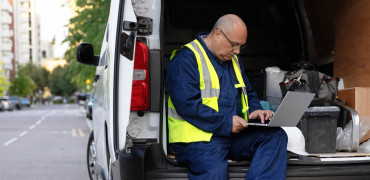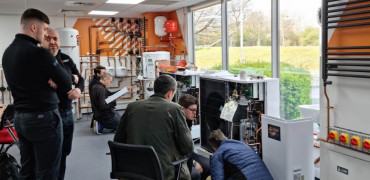If the past couple of years has taught us anything, it’s to expect the unexpected.
It’s amazing to think that two years ago, we were all going into lockdown and our whole way of working and living was about to change.
Those were strange and disturbing times and we all lost as the Covid pandemic took its toll, whether through personal tragedy or collectively.
The changes brought everything into question and it’s fair to say that we still haven’t quite worked out what that means for us as a society, for businesses, individuals, and the nature of work in general.
What we do know though is that better ventilation in our buildings can help in most situations by refreshing the air and removing pollutants, irritants … and viruses!
That presents a real opportunity as people now want fresher areas to work, rest and play in
Training and re-training
One thing that we as a business had to do during lockdown was explore different ways of delivering training for our products and this led to the complete revamp of how we approach the whole issue.
We now use a mixture of online learning, live webinar training, and ‘hands-on’ live equipment, where we can explore real-world issues.
This not only means that we can now reach about ten times as many engineers as before (when we were physically limited to the number we could get in a class at once), it also makes it more convenient for our customers, who can choose when to do the training.
Another additional benefit is that me and my fellow trainers have had time to plan and create new courses, so we have added more for Ecodan heat pumps, included commercial Ecodan, expanded the DX training, and included ventilation as a whole new area of training.
Pausing for breathe
The pandemic made us all focus on the quality of the air inside out buildings as we’ve never done before, and this led to us collaborating with BESA on some guides to IAQ, which are well worth a read.
The first is a Beginner’s Guide to Indoor Air Quality which includes a foreword by the inspirational Rosamund Adoo-Kissi-Debrah, who campaigned for years to have pollution recognised as the cause of death for her daughter.
Ros is now a World Health Organisation advocate for clean air and child health, and an Honorary President of the BESA Health & Wellbeing in Buildings Group.
The Guide looks at the whole topic of air quality, including both outdoor and indoor pollutants, and is worth giving to customers if they need help to understand the issues around IAQ and wellbeing.
Creating safe havens
The second Guide is called the BASH Guide (Buildings As Safe Havens) and is designed to be a practical guide that any office or facilities manager, school bursar or building owner can use to understand what to look for and what practical steps they can take.
The guide includes a foreword by Professor Cath Noakes OBE FREng FIMechE who chaired the Environment and Modelling Group – a sub-group of the Scientific Advisory group for Emergencies (SAGE) during the pandemic.
Titled ‘Ventilation is the most overlooked building safety issue’, the foreword doesn’t pull its punches and reports that recommended ventilations rates are likely to be effective for protecting health and wellbeing, but that many buildings fail to achieve these levels.
Free advice for your customers
The BASH Guide is useful for anyone looking for advice on improving the quality within their building.
It focuses on the six key steps they should take and includes a risk assessment form in four parts: Stop – things to focus on before starting; Think – a safety and health assessment; Act – Additional safety checks; Review – Looking at the end of the job and beyond.
More importantly for me though, the guide can act as a valuable opportunity for you as an HVAC expert to increase understanding with your customers of the issues around IAQ. This can therefore add another string to your bow and increase your potential to expand the expertise you can offer customers.
It’s worth remembering that you work in an industry that gets right into the heart of a building. You install the systems that will help provide comfort to the occupants for years to come. If you can do this with air conditioning, there is little reason why you can’t do this with ventilation.
That presents a real opportunity as people now want fresher areas to work, rest and play in.
And that’s where our training and support comes in.
Come and talk to us if you’d like to know more.
Ben Bartle-Ross is Technical Trainer at Mitsubishi Electric




